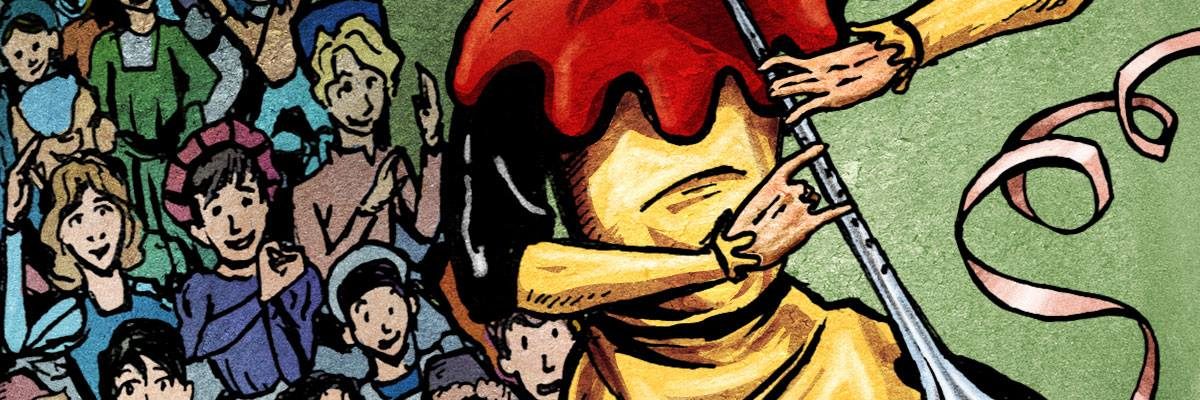The fairy tales collected by the Brothers Grimm can often surprise modern readers with their violence and cruelty. There is something particularly haunting about the story of the Pied Piper of Hamelin, the spurned rat-catcher who used his magical flute to kidnap over one hundred children. The most disturbing part of the story is that it might be true. While there was probably no magical flute, there may have been a real historical event that inspired the fairy tale. Tune-in and find out how ska bands, jester skeletons, and Stephen King all play a role in the story.

The drawing of the market church stained glass window created by Augustin von Mörsperg in 1532.

The Dance Macabre
Works Cited
Adams, Jeremy Duquesnay. “A World Lit Only by Fire. The Medieval Mind and the Renaissance: Portrait of an Age.William Manchester.” Speculum, vol. 70, no. 1, 1995, pp. 173–174., doi:10.2307/2864746.
Altmann, Anna E. The Seven Swabians, and Other German Folktales. Libraries Unlimited, 2006.
Karacs, Imre. “Twist in the Tale of Pied Piper’s Kidnapping.” The Independent, Independent Digital News and Media, 22 Oct. 2011, www.independent.co.uk/news/twist-in-the-tale-of-pied-pipers-kidnapping-1141174.html.
Mcalister, Neil Harding. “The Dancing Pilgrims at Muelebeek.” Journal of the History of Medicine and Allied Sciences, XXXII, no. 3, 1977, pp. 315–319., doi:10.1093/jhmas/xxxii.3.315.
Mieder, Wolfgang. The Pied Piper: a Handbook. Greenwood Press, 2007.
Thorpe, Benjamin. Northern Mythology. Lumley, 1851.
“The Lost Children of Hamelin.” Maria J. Pérez Cuervo, 8 July 2016, mjpcuervo.com/2015/03/06/lost-children-of-hamelin/.

